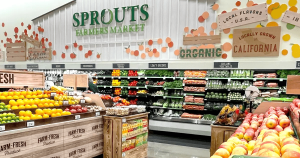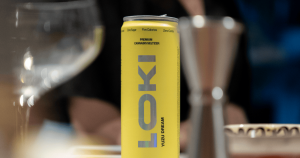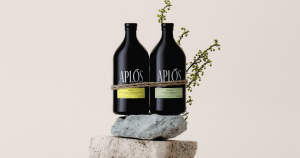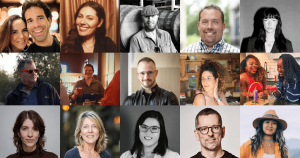Gen Z is drinking less alcohol than previous generations. That much, we know. But the why behind this trend is more nuanced than the usual headlines about health consciousness and sober curiosity suggest.
A 2023 Gallup survey found that just 62% of adults under 35 say they drink alcohol, down ten points from two decades earlier. And while many are quick to attribute this shift to a newfound obsession with wellness, the real picture is more complicated.
It’s Not Just About Health
Let’s get one thing straight: Gen Z is indeed interested in wellness. But if their declining alcohol consumption were purely about health, we wouldn’t see a simultaneous rise in nicotine use.
Vaping is booming, especially among young people who never smoked in the first place. It’s been framed as a cleaner, trendier alternative to smoking, with colorful packaging and flavors that make it feel more like a lifestyle accessory than a vice.
In 2011, only 1.5% of high school students vaped. By 2019, that number had surged to 27.5%.
There’s a contradiction here worth reflecting on: Gen Z may avoid alcohol partly because it feels like an interruption to their “always on, always aesthetic” approach to life. Vaping, on the other hand, offers an upper that doesn’t get in the way of morning workouts or mental clarity. It fits into both their real lives and the lives they want to curate and share with the world.
A Generation of Lonely Adults
To understand Gen Z’s drinking habits, you need to understand their social lives—or lack thereof.
In 2003, young Americans spent about 30 hours a month hanging out with friends in person. By 2020, that number had dropped to 10. It’s not just COVID, either. It’s a broader trend of delayed adulthood, digital-first friendships, and a lack of physical third spaces.
This lack of quality time has taken an emotional toll on the generation, too. In 2023, US Surgeon General Vivek Murthy declared loneliness a public health epidemic. A third of Americans aged 18–34 now report feeling lonely multiple times a week. Nearly 1 in 10 say they’re lonely every single day.
If alcohol has traditionally functioned as a social lubricant, it makes sense that fewer connections means less drinking. Not because young people don’t want to drink, but because there’s no one to drink with.
Nights Out Simply Aren’t in the Budget
Let’s not forget the elephant in the room: money.
A 2025 Forbes report found that 61% of Gen Z adults experience financial anxiety, largely due to rising housing costs, job insecurity, and the looming sense that traditional financial milestones (homeownership, retirement, etc.) are slipping out of reach.
Alcohol is expensive. Especially when paired with ride shares, cover fees, and inflated bar prices. A recent study found that 55% of Gen Zers regretted overspending on alcohol, and nearly 30% went into debt because of their drinking habits.
When you’re budgeting for groceries and a monthly therapy copay, it’s hard to justify a $60 bar tab. And when you’re broke and burned out, you start craving alternatives that feel indulgent without being irresponsible.
What This Means for Non-Alc Brands
Let’s break it down. If you want to win Gen Z, you’ll need to toss the standard playbook. Here’s where to focus:
1. Ditch Any Preachy Angles
Gen Z doesn’t need a lecture. They know alcohol has health risks. That’s not the issue.
Some brands understand this. Their products don’t wave a “health halo” but instead tap into flavor complexity and tradition. They feel elevated and intentional.
What Gen Z are seeking are mood-based benefits: relaxation, focus, a sense of control, or a little moment of calm in an otherwise overstimulating day. Brands that clearly position themselves as pathways to these benefits are more likely to survive and thrive.
2. Design for Solitude
This isn’t a generation that’s pregaming every night. Many are drinking solo, at home, or not at all—and they want products that support that.
For example, brands that provide pre-mixed cocktails don’t require tools, glassware, or a crowd. They’re formulated to feel rich and layered, even if you’re drinking one while rewatching Normal People on your couch.
For new entrants into the category, this means considering:
- Small can formats
- Subtle flavor options (no sugar bomb mocktails)
- Ritual-friendly branding (think self-care, not nightlife)
3. Spark Social Energy (Without Faking It)
Gen Z is lonely, but not apathetic. They want connection. They want community. They just don’t want to be told that “fun” requires a shot glass.
That’s why campaigns like WYNK’s Get Together work. They acknowledge that people still want group moments. The copy isn’t prescriptive, it’s inviting. Stock your fridge, hit the group chat, and show up with something you can enjoy. It’s a refreshingly nonjudgmental way to say: you should all be hanging out.
Gen Z Doesn’t Want a Replacement, They Want a Reframe
This generation isn’t avoiding alcohol because they’re holier-than-thou. They’re often doing it because it’s unaffordable and increasingly irrelevant to the life they’re building.
Non-alcoholic brands that want to resonate need to stop pretending they’re just “swapping in” for booze. That’s not the job.
The job is creating something meaningful in its own right—something that makes sense for a generation that’s redefining adulthood in real time. Not because they have to. But because they don’t see any other choice.






